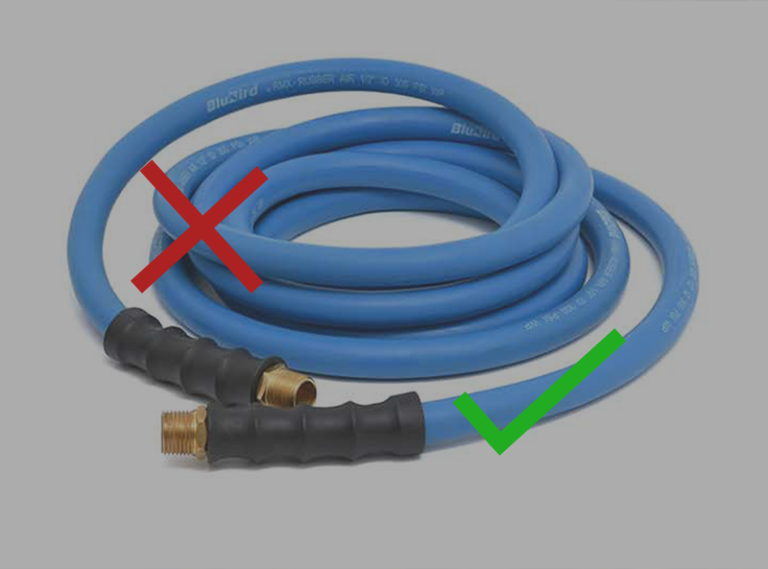Free Shipping | Fast Delivery | 30 Day Returns ON ALL Snow Guns!
Free Shipping | Fast Delivery | 30 Day Returns ON ALL Snow Guns!

In this article, we talk about why your snowmaking air hose might have stopped working and different solutions to fix it.
Compressed air is needed to break up water droplets into tiny ice crystals in the nucleation nozzle to form the proper water droplets for snowmaking. If airflow is restricted, the nucleation nozzle will not function properly, and large water droplets will be formed at the nozzle. If the airflow is too low and droplets are too large, the nucleation process is impossible, and snowflakes will not form. Instead, water will be sprayed into the air, and ice will form.
Water droplets exist in the air (humidity). When air is pulled into the air compressor, so are the tiny water droplets that exist naturally in the air. The air compressor pushes the compressed air and little water droplets through the air hose toward the snow gun nucleation nozzle. As these tiny water droplets travel through the air hose, they freeze onto the inside walls and in low points along the hose. As more water freezes inside the air hose over time, airflow becomes more restricted. When enough water has frozen inside the air hose, this will affect the nucleation nozzle performance until snow cannot form.
A few factors will affect how long you can make snow before the snow gun stops working.
1 – Use a short air hose (no longer than 10-12ft)
Shorter air hoses work better. When you reduce the length of the air hose, water droplets in the air pass quickly through the hose and don’t have time to settle. In our experience, a 10ft air hose (3/8″ ID) can run smoothly for 15+ hours without any issues in performance. With a 10ft air hose, you must run your air compressor next to the snow gun during operation. This has pros and cons. The biggest pro is that the short air hose eliminates freezing and pulls cold air into the tank and through the snow gun. Cold air inside the nucleation nozzle helps with the freezing and crystal formation of the water droplets for nucleation. A con would be the risk of running the compressor outdoors and exposing it to the elements.
2 – Insulate your air hose
Insulating your air hose is the next best option if you need to run your air compressor in the garage (or shed). Pipe insulation at Home Depot or Lowe’s works excellently and can be a cheap way to fix this issue. We recommend getting foam pipe insulation to slide your air hose through. Here is an example at Home Depot.
Insulating your air hose should eliminate the issue as long as the compressor pulls warmer air (inside the garage) to keep the air hose warm until it reaches the snow gun.
3 – Use a desiccant air dryer
Another option is to purchase an air dryer for the air compressor. Air dryers are designed to pull moisture from the air before the air enters the air hose. If all the moisture is removed from the air hose, then no water can freeze! This option is the most expensive since air dryers are typically $100-$200.
In conclusion, a restricted (frozen) air hose in residential snowmaking will negatively impact the system until snow cannot be formed. When water droplets in the air pass through the air compressor and into the air hose, the water droplets freeze on the inside walls, and low spots of the hose create a build-up. Once this build-up restricts airflow too much, the snow gun nucleation nozzle cannot function properly, and snow cannot form. The best ways to fix this problem are 1) using a short 10ft air hose, 2) insulating longer air hoses with foam pipe insulation, or 3) using a desiccant air dryer to remove water before it enters the air hose.
If one of these three options is followed, you can make snow for hours on end without any air hose issues!
Our articles are written and reviewed by professional snowmaking engineers who have 20+ years of experience designing Snow Guns.
Our Purpose: We want those who are searching to understand Snowmaking to the best of their ability.